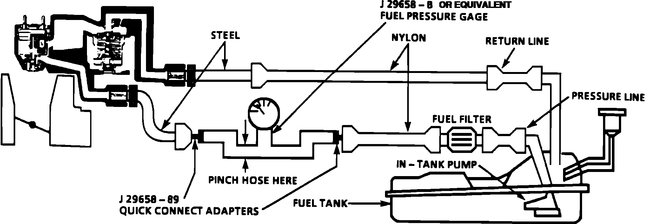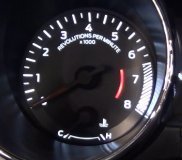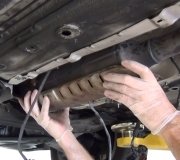Hi and thanks for using 2CarPros.com.
Most likely, it is not shifting because of the low speed. If have a few ideas for you to check. However, the first thing I would suggest is checking for trouble codes. This vehicle has an OBD 1 system. Here are the directions for retrieving codes:
https://www.2carpros.com/articles/buick-cadillac-chevy-gmc-oldsmobile-pontiac-gm-1983-1995-obd1-code-definitions-and-retrieval-method
When you do this, let me know what code you find.
Next, here is a link that discusses reasons for low power. Honestly, it may feel like the brakes are being applied, but I see no way that can happen. The engine still being in first gear is most likely slowing the vehicle. Take a look through this link.
https://www.2carpros.com/articles/engine-has-low-power-output
If that is not helpful, there are two other things I would like for you to check, fuel pressure and the catalytic converters for plugging. Here are two links that show how that is done:
https://www.2carpros.com/articles/how-to-test-a-catalytic-converter
https://www.2carpros.com/articles/how-to-check-fuel-system-pressure-and-regulator
Here are the directions specific to your vehicle for testing fuel pressure. The attached picture correlates with these directions.
___________________
WARNING: To reduce the risk of fire and personal injury, it is necessary to relieve the fuel system pressure before connecting a fuel pressure test. A small amount of fuel may spill when disconnecting fuel hoses. Always wrap a shop towel around fittings to catch any fuel that may leak out. Refer to Fuel Pressure Release Procedure.
1. Loosen fuel filler cap to relieve fuel tank vapor pressure
2. Remove fuel pump fuse or disconnect electrical connector at fuel tank.
3. Start and run engine until fuel supply in fuel lines is exhausted and engine shuts off. Engage starter another five seconds to relieve any remaining pressure.
4. Disconnect negative battery cable to prevent fuel discharge if an accidental attempt is made to start the engine.
5. Disconnect fuel feed hose in engine compartment. Install J 29658B or BT-8205 gage and J 29658-85 or J 29658-89 adapter between the flexible hose and steel line. Tighten gauge to insure leak-free connections.
6. Connect negative battery cable.
7. Reconnect fuel pump fuse or electrical connector at fuel pump.
8. Start car and observe fuel pressure reading. It should be 62 to 90 kPa (9 to 13 PSI). If not, refer to CHART A-7.
9. Disconnect negative battery cable and loosen filler cap to relieve tank vapor pressure.
10. Remove fuel pressure gauge.
11. Install new o-rings as needed on fuel feed lines.
12. Reconnect fuel lines.
13. Connect negative battery cable.
14. Cycle ignition key "on" to pressurize fuel system and check for leaks.
________________________
I hope this helps. I have to be honest, the first thing I would check is for trouble codes. That usually will point you in the right direction.
Let me know if this helps, if you have other questions, or what you find.
Take care,
Joe
Image (Click to make bigger)
Saturday, September 22nd, 2018 AT 6:41 PM



